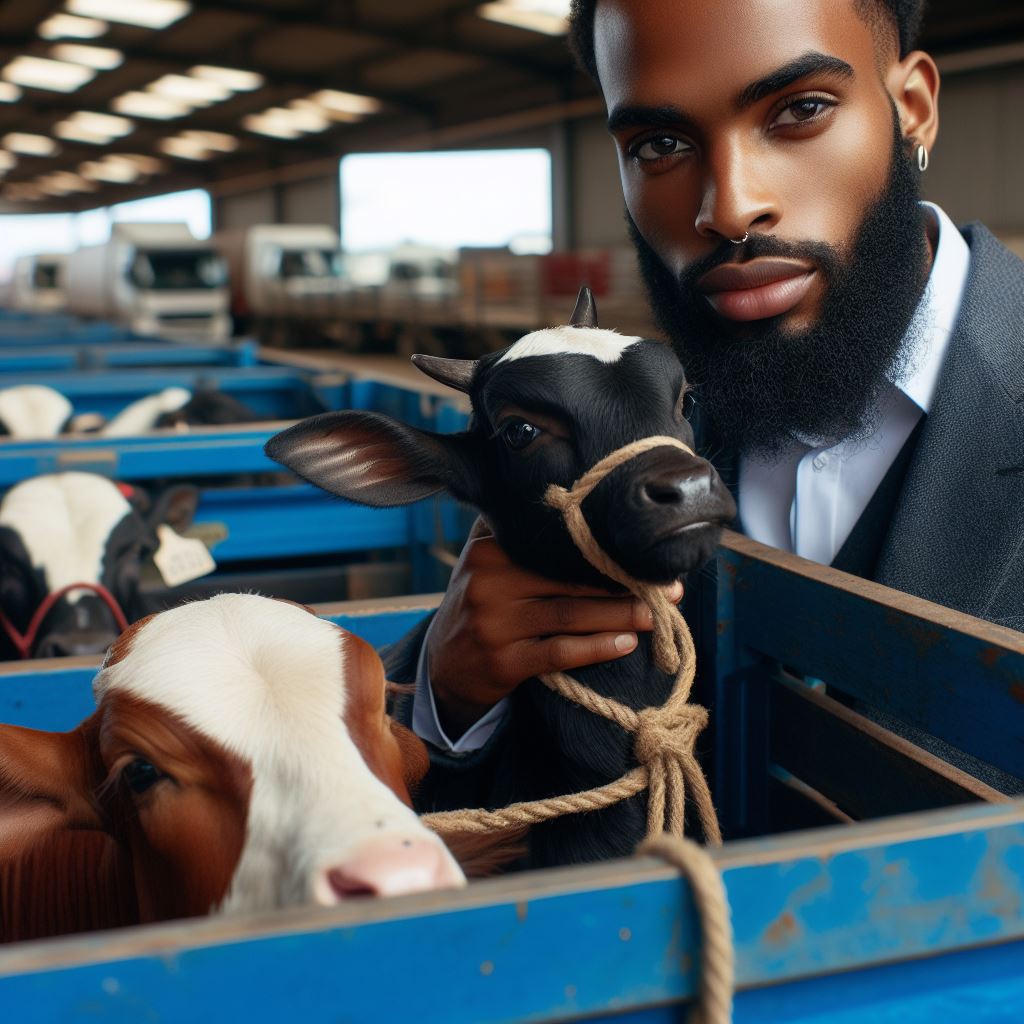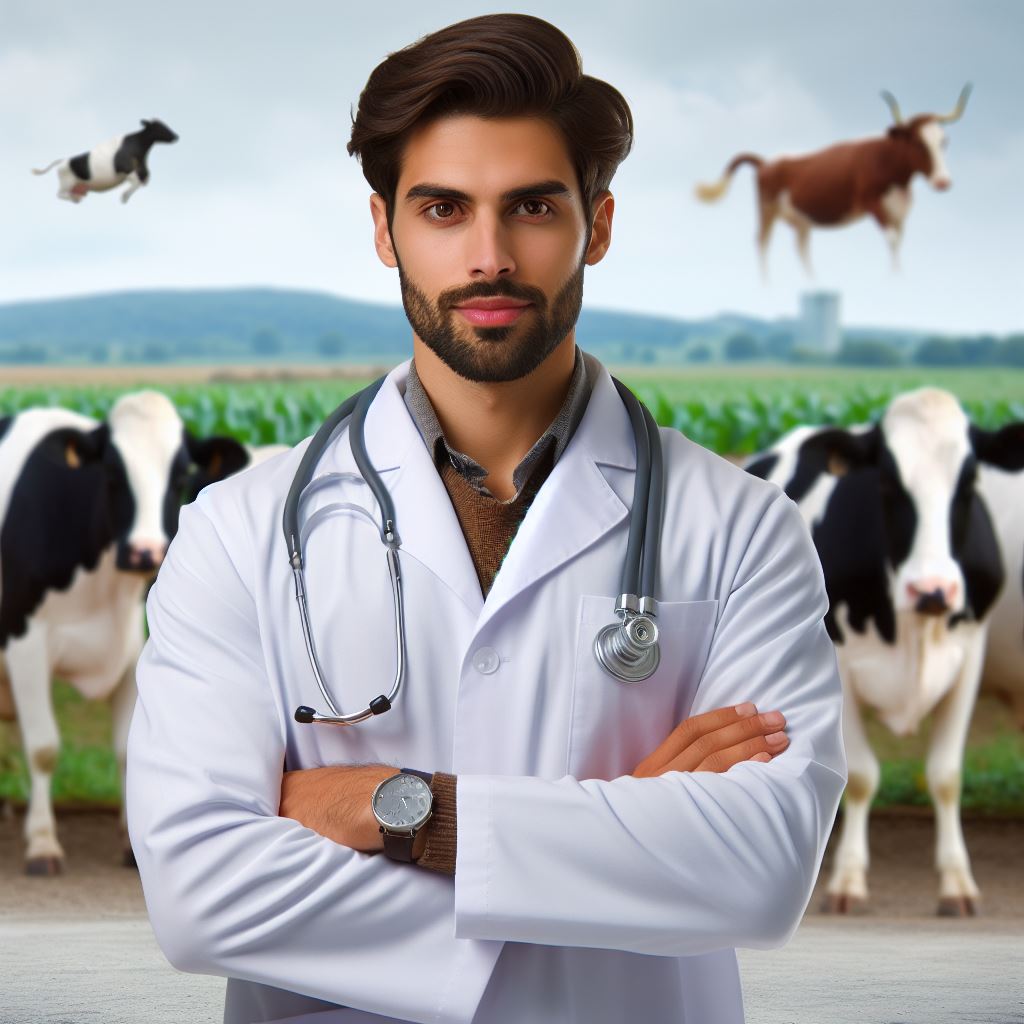Introduction
Understanding livestock import rules is vital for anyone involved in the importation of animals.
These rules dictate the procedures that must be followed to ensure the safe and legal importation of livestock.
Importance of understanding livestock import rules
Comprehending and adhering to livestock import rules is crucial to avoid legal repercussions and maintain the well-being of the imported animals.
Failure to comply with these rules can result in fines, penalties, or even the refusal of entry for the animals.
Brief overview of the topic
Livestock import rules encompass a variety of regulations that address animal health, welfare, and biosecurity.
These rules vary between countries and are in place to prevent the introduction and spread of diseases, such as foot-and-mouth disease or avian influenza.
Importers must familiarize themselves with the specific import requirements for each species of livestock they intend to bring into a country.
These requirements may include health certificates, quarantine periods, vaccination records, or specific testing procedures.
Additionally, importers should be aware of any additional documentation, such as import permits or customs declarations, which may be necessary to facilitate the importation process.
Navigating livestock import rules can be complex, but importers must ensure the safety and welfare of the animals, as well as comply with the regulations of the importing country.
By understanding and following these rules, importers can facilitate the smooth and legal importation of livestock while safeguarding biosecurity and animal welfare.
Overview of Livestock Import Rules
Livestock import rules and regulations are put in place to ensure the safety and well-being of both animals and people involved in the process.
These rules aim to prevent the spread of diseases, maintain food safety standards, and protect the environment.
Explanation of why import rules exist
Import rules exist for several reasons.
First and foremost, they are designed to protect domestic livestock from the introduction of diseases that may be present in other countries.
Transform Your Agribusiness
Unlock your farm's potential with expert advice tailored to your needs. Get actionable steps that drive real results.
Get StartedBy implementing import rules, governments can reduce the risk of disease outbreaks that could have devastating consequences for their livestock industries.
Secondly, import rules help to ensure the safety and quality of imported meat and other livestock products.
By enforcing specific import regulations, authorities can guarantee that imported products meet the required standards for food safety, including those related to hygiene, labeling, and the use of additives or veterinary drugs.
Lastly, import rules exist to safeguard the environment and prevent the introduction of invasive species.
Certain animals may pose a threat to natural ecosystems if introduced without proper control measures.
Import rules help to minimize this risk by regulating the importation of potentially harmful species and ensuring appropriate quarantine procedures.
Different Import Regulations for Different Countries
Import regulations can vary significantly from one country to another.
The specific rules and requirements for livestock importation depend on factors such as the country’s geographic location, local disease prevalence, and previous experiences with disease outbreaks.
Some countries have relatively lenient import rules, allowing for easier trade and movement of livestock.
Others have stricter regulations due to concerns about disease transmission or to protect their domestic agricultural industries.
These variations can include restrictions on the importation of specific species, strict testing and vaccination requirements, or mandatory quarantine periods.
Key Regulatory Bodies Involved in Enforcing Import Rules
Enforcing import rules is the responsibility of various regulatory bodies, both at national and international levels.
These bodies work together to develop and implement regulations, monitor compliance, and facilitate the safe and efficient movement of livestock across borders.
At the international level, the World Organisation for Animal Health (OIE) plays a crucial role in setting standards and guidelines for the import and export of animals and animal products.
The OIE works to harmonize import rules globally and promote cooperation among countries to ensure the safe trade of livestock.
Within each country, regulatory bodies such as the Ministry of Agriculture, the Department of Agriculture, or the equivalent agency oversee the enforcement of import rules.
These bodies collaborate with veterinary authorities, customs agencies, and other relevant stakeholders to establish and enforce regulations effectively.
In essence, livestock import rules and regulations are necessary to protect animal and human health, ensure food safety, and prevent environmental damage.
Different countries have varying import regulations, and various regulatory bodies play a vital role in enforcing these rules.
By navigating and complying with import rules, countries can strike a balance between trade facilitation and safeguarding their livestock industries.
Read: New Agri Regulations: What Farmers Must Know
Understanding the Necessary Documentation
When it comes to importing livestock, understanding the necessary documentation is crucial.
Without the proper paperwork, your imports could be delayed or even rejected.
In this section, we will provide an in-depth overview of the required certificates and permits, discuss the importance of accurate and complete documentation, and highlight common mistakes to avoid when preparing your paperwork.
Showcase Your Farming Business
Publish your professional farming services profile on our blog for a one-time fee of $200 and reach a dedicated audience of farmers and agribusiness owners.
Publish Your ProfileOverview of Required Certificates and Permits
- Health Certificates: Health certificates are the most essential documents when importing livestock. They certify that the animals are free from diseases and meet the importing country’s health requirements.
- Import Permits: Import permits are issued by the importing country’s regulatory authorities. These permits outline the specific conditions and restrictions for importing livestock, such as the quantity allowed and the quarantine period required.
- Certificates of Origin: Certificates of Origin verify the country from which the livestock originated. They are essential for ensuring compliance with import regulations and trade agreements.
Importance of Accurate and Complete Documentation
- Compliance with Regulations: Accurate documentation ensures that you meet all the necessary import regulations of the destination country. Failure to comply can result in severe consequences, such as fines or the denial of entry for your livestock.
- Smooth Customs Clearance: Complete documentation expedites the customs clearance process, saving you time and reducing the chances of delays or additional inspections. This is especially crucial in perishable goods like livestock, where delays can have devastating consequences.
- Risk Mitigation: Accurate documentation helps mitigate the risk of disease transmission. By providing comprehensive information about the livestock’s health status, you protect both the receiving country’s livestock industry and your own.
Common Mistakes to Avoid When Preparing Documentation
- Incomplete or Outdated Forms: Ensure that you use the most recent version of all required forms and fill them out completely. Incomplete forms can lead to rejection or delays.
- Incorrect Information: Double-check all information entered on the documents for accuracy. Even small errors, such as typos or misspellings, can cause significant delays and may require you to resubmit the paperwork.
- Lack of Attention to Detail: Pay close attention to specific requirements outlined by the importing country. Failure to adhere to these requirements can result in rejection or the need for costly modifications.
Lastly, navigating livestock import rules requires a thorough understanding of the necessary documentation.
Health certificates, import permits, and certificates of origin are among the essential documents required.
Accurate and complete documentation is vital for compliance, smooth customs clearance, and risk mitigation.
To avoid common mistakes, ensure you use updated forms, provide correct information, and pay attention to the specific requirements of the importing country.
By following these guidelines, you can streamline the import process and ensure the safe and timely arrival of your livestock.
Read: Farming Subsidies in 2024: A Full Analysis
Preparing for the Import Process
Importing livestock requires careful preparation to navigate through the complex rules and regulations.
Familiarizing yourself with the destination country’s specific requirements is the first step toward a successful importation process.
Thoroughly research the destination country’s laws, regulations, and guidelines on livestock importation.
Different countries have varying rules and restrictions that must be met to import animals legally.
Understanding and following these requirements is crucial to avoid any legal issues or setbacks.
Obtaining necessary health certifications is a critical aspect of importing livestock.
These certifications ensure that the animals are healthy and free from diseases that could pose a risk to the destination country’s livestock population.
Contact the appropriate veterinary authorities in the destination country to determine the specific health certifications required.
In addition to health certifications, compliance with quarantine protocols is essential.
Quarantine helps prevent the spread of diseases and ensures that imported livestock pose no threat to the local livestock population.
Quarantine periods may vary depending on the destination country and the type of livestock being imported.
Make sure to familiarize yourself with the length and requirements of the quarantine period.
Researching the Destination Country’s Specific Requirements
Researching the destination country’s specific requirements is crucial to ensure a smooth and compliant import process.
The following steps will help guide you through the research process:
Start by identifying the specific livestock import rules and regulations of the destination country.
These rules may include documentation requirements, testing protocols, or specific conditions for different livestock species.
Thoroughly understanding these regulations will save you time and effort in the long run.
Contact the appropriate government agencies or veterinary authorities in the destination country to obtain accurate and up-to-date information.
These organizations can provide the most current requirements and guidance regarding livestock importation.
It is essential to establish clear communication with these authorities to prevent any misunderstandings or misinterpretations.
Be aware of any additional requirements that the destination country may impose, such as breed-specific restrictions or vaccination protocols.
Some countries have restrictions on certain breeds or require specific vaccinations before allowing importation.
Familiarize yourself with these additional requirements to avoid any surprises or issues during the import process.
Obtaining Necessary Health Certifications for Livestock
Obtaining the required health certifications for livestock is a crucial step in the import process.
Follow these guidelines to ensure compliance:
Contact a licensed veterinarian with experience in international livestock export/import to conduct health examinations on the animals intended for importation.
The veterinarian will assess the animals’ health status and issue the necessary certifications required by the destination country.
Ensure that the health certifications meet the specific requirements of the destination country.
Each country may have its format, content, and language requirements for health certifications.
It is essential to work closely with the veterinarian to ensure the certifications are accurate and complete.
Submit the health certifications and any supporting documents to the appropriate authorities in the destination country for review and approval.
These documents will be thoroughly evaluated to ensure compliance with the country’s import regulations.
Adhere to any additional instructions or procedures provided by the authorities during this stage.
Compliance with Quarantine Protocols
Compliance with quarantine protocols is essential when importing livestock.
Showcase Your Farming Business
Publish your professional farming services profile on our blog for a one-time fee of $200 and reach a dedicated audience of farmers and agribusiness owners.
Publish Your ProfileHere are the steps to ensure a successful quarantine process:
Thoroughly understand the quarantine requirements and protocols set by the destination country.
These requirements may include specific facility conditions, duration of the quarantine period, and any necessary tests or treatments.
Plan and prepare accordingly to meet these requirements.
Prepare suitable facilities to accommodate the livestock during the quarantine period.
The facilities must meet the destination country’s standards and provide the necessary space, shelter, and sanitation for the animals.
Adequate planning in advance will help ensure a smooth and stress-free quarantine experience for the animals.
During the quarantine period, follow all instructions and restrictions imposed by the destination country.
This may include limited access to the quarantined area, restricted movement of livestock, or specific feeding and care protocols.
Strictly adhere to these guidelines to prevent any issues or complications that could jeopardize the import process.
By thoroughly researching the destination country’s specific requirements, obtaining necessary health certifications, and complying with quarantine protocols, you can successfully navigate the livestock import process.
Proper preparation and adherence to regulations will ensure a smooth and legal importation, benefiting both the importer and the destination country’s livestock population.
Read: Organic Certification Process Simplified

Transportation and logistics considerations
When it comes to navigating livestock import rules, transportation and logistics play a crucial role.
Here are some key considerations to keep in mind:
Choosing the appropriate mode of transportation
- Consider the distance and the type of livestock being transported before selecting the mode of transportation.
- For short distances, road transport is often preferred due to its convenience and cost-effectiveness.
- For long distances or international shipments, air or sea transportation might be more suitable.
- Consult with experts in livestock transportation to determine the best mode for your specific needs.
Ensuring proper handling and care of the livestock during transportation
- Ensure that the vehicles are equipped with appropriate facilities to maintain the well-being of the livestock.
- Depending on the species, livestock may require specific temperature, ventilation, space, and feeding conditions.
- Train the transport personnel on proper handling techniques to minimize stress and injuries to the animals.
- Regularly inspect and maintain the vehicles to ensure they meet the necessary standards.
- Adhere to biosecurity measures to prevent the spread of diseases during transportation.
Dealing with potential delays or unforeseen circumstances
- Plan and allow for extra time to anticipate any potential delays that may occur during the transportation process.
- Keep communication lines open with the transport company to stay informed about any unexpected changes or disruptions.
- Consider obtaining appropriate insurance coverage to protect against unforeseen events or accidents.
- Have a contingency plan in place to address any issues that may arise, such as alternate routes or emergency veterinary care.
- Stay up-to-date with local regulations and customs requirements that may impact the transportation process.
By carefully considering transportation and logistics factors, navigating livestock import rules can be made smoother and more efficient.
Remember to prioritize the welfare and safety of the animals throughout the entire transportation journey.
Read: Latest USDA Regulations: How They Affect Farmers
Compliance with Health and Welfare Standards
- Ensure that all livestock imported adhere to the health and welfare standards set by authorities.
- Regularly review and update the standards to meet evolving industry regulations and best practices.
- Strictly enforce penalties and consequences for non-compliance to deter any violations.
- Regularly inspect facilities and transportation methods to verify compliance with the standards.
- Provide extensive training and education to all personnel involved in handling and transporting livestock.
Prevention and Management of Diseases During Transportation
- Implement a comprehensive disease prevention and management plan for all livestock transport.
- Ensure regular veterinary checks before, during, and after transportation to monitor the health of the animals.
- Properly sanitize and disinfect vehicles and equipment used for livestock transport to minimize disease transmission.
- Implement effective biosecurity measures to prevent the spread of diseases among different livestock species.
- Monitor and record any signs of illness or disease during transportation and promptly address any health issues.
Providing Appropriate Food, Water, and Shelter for the Animals
- Ensure that all livestock have access to an appropriate and sufficient amount of food and water during transportation.
- Design and maintain transport vehicles with adequate ventilation, temperature control, and comfortable bedding.
- Regularly check and replenish food and water supplies during long journeys to prevent dehydration and malnutrition.
- Provide appropriate shelter and protection from extreme weather conditions during transportation.
- Train personnel on proper feeding and watering techniques to ensure the well-being of the livestock.
Minimizing Stress and Ensuring the Well-being of the Livestock
- Handle and transport livestock with care and gentleness to minimize stress and avoid causing harm.
- Implement proper loading and unloading techniques to reduce the risk of injuries and distress to the animals.
- Minimize travel and waiting times during transportation to reduce stress and fatigue for the livestock.
- Monitor and control environmental factors, such as noise and vibration levels, to ensure a calm and comfortable journey for the animals.
- Regularly evaluate and improve transportation practices to prioritize the well-being and welfare of the livestock.
Dealing with potential challenges and obstacles
- Researching and understanding the specific import requirements of each country is essential.
- Ensure proper documentation is in place, such as health certificates and import permits.
- Be prepared for potential delays or changes in regulations that may affect the import process.
- Consider the impact of climate or environmental conditions on the well-being of the livestock during transport.
- Plan ahead and allocate sufficient resources to address unexpected challenges that may arise.
Resolving issues with customs and border control
- Establish clear lines of communication with customs and border control officials.
- Provide accurate and detailed information about the livestock being imported.
- Ensure that all necessary paperwork and permits are readily available for inspection.
- Follow recommended biosecurity measures to alleviate concerns regarding the spread of diseases.
- Collaborate with customs agents to understand and comply with their specific requirements.
Addressing concerns with local regulations or cultural differences
- Research and understand the local regulations and cultural practices in the destination country.
- Be respectful and sensitive to cultural differences, ensuring compliance with local customs.
- Work with local authorities to clarify any uncertainties or misunderstandings about import rules.
- Seek guidance from local experts or consultants familiar with the local regulations.
- Build relationships with local stakeholders to navigate cultural differences effectively.
Seeking legal advice or assistance if necessary
- Consult with legal experts specializing in international trade and livestock importation.
- Ensure compliance with international trade laws, including import/export regulations and animal welfare standards.
- Consider engaging a customs broker or agent to assist with navigating complex import procedures.
- Stay updated on changes in import laws and seek legal advice to adapt accordingly.
- Protect your interests by understanding the legal implications and requirements involved in livestock import.
Generally, navigating livestock import rules can be challenging, but with careful planning, research, and collaboration with relevant authorities, it becomes more manageable.
Understanding and complying with import requirements, resolving issues with customs and border control, addressing cultural differences, and seeking legal advice when needed are all crucial steps.
By following these guidelines, importers can ensure the smooth and successful importation of livestock, enhancing their own business ventures and contributing to the agricultural industry.
Delve into the Subject: Precision Farming: Policy Shifts in the US
Conclusion
Importance of thorough knowledge and adherence to livestock import rules
Thorough knowledge and adherence to livestock import rules are of utmost importance when importing livestock.
Failure to comply with these rules can have severe consequences.
Summary of key points covered in the blog post
In this blog post, we covered several key points related to navigating livestock import rules.
Firstly, we discussed the importance of understanding the specific regulations and requirements imposed by the destination country.
Secondly, we highlighted the significance of proper documentation and record-keeping throughout the import process.
Encouragement to seek professional guidance for successful navigation of import rules
Additionally, we emphasized the need for proper identification, quarantine, and testing procedures to ensure the health and safety of both animals and humans.
Furthermore, we discussed the risks posed by non-compliance, such as the spread of diseases and potential legal actions.
Overall, navigating livestock import rules requires thorough knowledge, attention to detail, and adherence to the specific requirements of the destination country.
Importers should seek professional guidance to ensure successful compliance and efficient importation of livestock.




